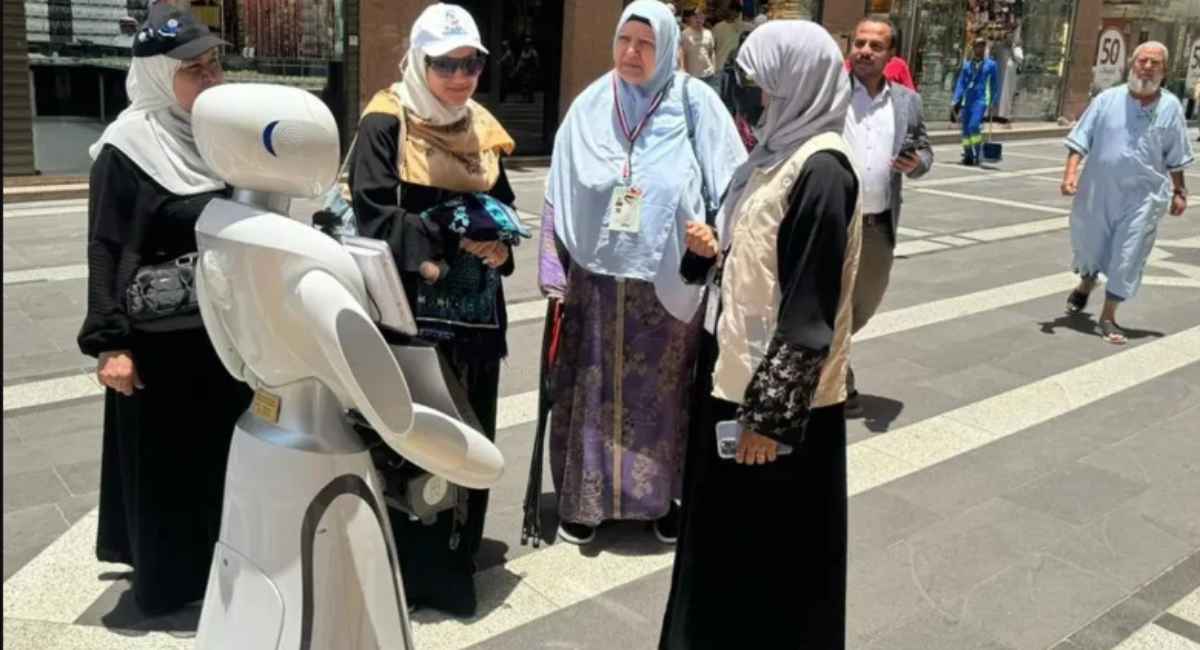Hajj is the annual Islamic pilgrimage to Mecca, Saudi Arabia, and is a mandatory religious duty for all capable Muslims. This year, Hajj 2025 began on June 4 and will end on June 9. This time, the experience is remarkably different from the traditional one.
Problems Faced by Pilgrims in the Past Years
Hajj is one of the biggest religious gatherings around the world and it comes with a cost. By early June, over 1 million visitors had already arrived in Saudi Arabia for the annual Hajj pilgrimage. Having so many people moving around in one comparatively small area has led to problems in the past for pilgrims.
Thousands of pilgrims were killed in stampeding crowds in 1990 and 2015. Even last year, over 1,300 died due to extreme heat. This is because pilgrims often walk up to 65 kilometres a day in 40-to-50 degrees Celsius heat.
There have also been fires, protests, suicides, collapsing buildings and infectious diseases at the Hajj, as well as more everyday problems like people getting lost or having health problems.
Last year’s many deaths were mostly of pilgrims who didn’t have official permission to be there and therefore couldn’t access services like air-conditioned shelters in the extreme heat.
Integration of High Tech in Hajj 2025
This year’s Hajj stands as a testament to Saudi Arabia’s commitment to modernising the pilgrimage.
Saudi Arabia will use drones with thermal imaging as well as artificial intelligence and facial recognition technology to ensure that only those who have Hajj permits are allowed in.
Nusuk System
To avoid overcrowding, Saudi Arabia’s Nusuk website (also a mobile phone application) allows attendees to register to enter certain areas at allotted times. This system includes an electronic identity card and a smart wristband. It will hold information on the user’s identity, travel plans, finances, health and accommodation.
Some of the wristbands have location tracking, monitor the wearer’s blood oxygen levels and heart rate, and can even be used to call for medical help.
Moreover, the Nusuk card must be carried throughout the pilgrimage and is used to access transport and other services. To manage the influx of pilgrims efficiently, biometric capture and registration stations have also been established at border points.
Entry without biometrics won’t be an option anymore.
“All of these technologies are mandatory and those who refuse them are not allowed to perform the pilgrimage,” explains Zeinab Ismail, a researcher and editor at the Lebanon-based digital rights organisation, SMEX.

Robots and AI
Other technological advancements includes Hajj robot guides. Yes, robots will be used to guide visitors around religious sites and give them water, Quran and other essentials. These robots can give advice in up to 11 languages until now (i.e. Manarah 2).
The introduction of AI-powered surveillance and crowd management systems has significantly improved safety and efficiency. Drones will be used for surveilling, and thermal imaging will be used.
Medical services have also seen significant upgrades. AI-assisted emergency response systems ensure timely healthcare, and mobile stroke units have been deployed to address medical emergencies promptly.

Other Technological Advancements
There are also newly paved, more reflective (and therefore cooler) streets, paths that minimise heat for walking comfort. Additionally, shaded walkways and misting fans have been installed in key areas like Mina and Arafat to offer respite from the scorching temperatures.
A special white pilgrim’s gown will be available for pilgrims, it is made from futuristic fabric that keeps the wearer up to 2 degrees Celsius cooler.
To address the challenges posed by extreme heat, Saudi authorities have also implemented the world’s largest mosque cooling system in the Grand Mosque. This will help provide climate-controlled environments for pilgrims.
Health kits and educational materials, developed with the Ministry of Health, are available in at least eight languages, including Arabic, English, French, Urdu, Persian, Indonesian, Malay and Turkish.
Religion and Innovation Must Be Balanced
While technology has undoubtedly enhanced the Hajj experience, it also raises questions about maintaining spiritual sincerity in an age of constant digital connection.
Pilgrims are encouraged to use these tools mindfully, ensuring that technology serves as an aid rather than a distraction from their spiritual journey.
The integration of technology into Hajj 2025 exemplifies how tradition and innovation can coexist, offering a more accessible, safe, and enriching experience for pilgrims worldwide.
Stay tuned to Brandsynario for the latest news and updates.







































